
It’s another sunny day. Today I shall visit Rochester, because Rochester is where I live, and to where I am confined in these days of Coronavirus lockdown, even as that lockdown is beginning to be eased. For the time being, Rochester is the world.
Early morning Zoom call, talking to early evening Sydney. How quickly we have adjusted to a way of conversing in which how we are situated is as communicative as what we say. People do not read our faces (we know they are washed-out, misleading simulacra) but infer all that might be said from our walls. What we put behind us is what speaks so eloquently about us.
Outside the front door the journey begins. My daily tour.

The Medway river is nearby, lined with small boats, bright white and sparkling in the sun. The road and rail bridges take you to Strood, nestled on the river’s northern side. There is a narrow walkway, heavily used because in that direction are the supermarkets. No wider than six feet, the obedient natives do their best to achieve the impossible, staying two metres apart as the government advises. We swerve and cling to the sides; we glower behind the backs of those who fail to observe the new courtesies.
Away from the bridge and heading along the riverside, gardens to the right, castle walls to the left. That which was once all Norman has been made smooth by Victorian improvement. It softens but does not debase the inheritance.
Up steps through an archway to the castle grounds. The tall, rectangular, stark castle stands to the edge of pleasant grounds encircled by what survives of the walls. Again the Normans and Victorians have come to an amicable arrangement. A number of Elizabethans sit in small clusters on the grass, socially distanced where they must be, but mindful to reoccupy a space. They are coming out of hibernation. They are plants, freshly watered after a long drought, compelled to reach out to the sun.

Through the grounds and out the other side, down to the river’s edge once more. Along the esplanade, to Churchfields, a extensive grassy slope from the top of which one surveys the epic stretch of the river, from deep within the county to estuary and the unseen sea. Near to these slopes, Short Brothers launched seaplanes, as a plaque reminds us. Land, water and sky.
The slope is criss-crossed by paths. Along these the early morning runners make their circuits. Evidently running to targets of so many rotations, they proceed with boldness along the downward diagonal, move steadily along the reverse horizontal, then stagger slowly up the steps to begin the cycle once more. There is something singularly mysterious about the desire of (healthy) humans to run in circles. It is as though we are forever chasing after ourselves.
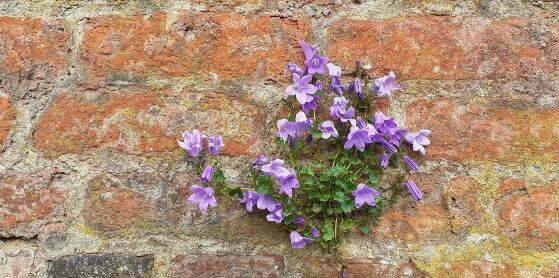
The top of Churchfields is marked by a long wall of crumbling brick, graced by clumps of flowers. This is a town of entrancing walls.
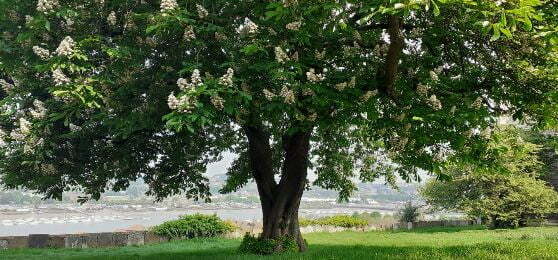
Beyond is St Margaret’s Church. Its small, unmown ground, with gravestones tucked along the walls, is my favourite local spot. Sit on the bench, look out over the panorama of river and townscape, with all the layers of past industry and occupation before you. A vantage point for seeing present and historical time ebb by.
Turning left and down the hill once more, along pretty St Margaret Street, where some secret contract seems to have been signed over the ages to ensure that every building is different.
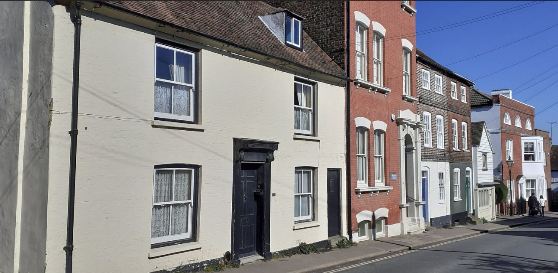
There seem to be fewer rainbows in the windows, drawn by children as a national bonding exercise to defeat the virus. Are they gradually being taken down? The children must know something.
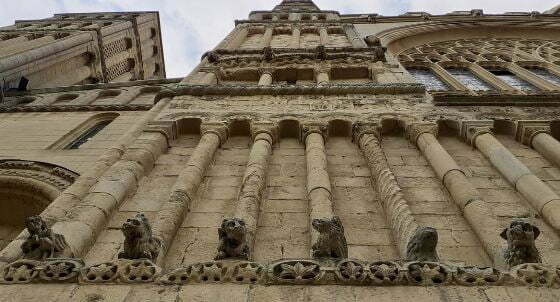
And so full circle to the cathedral, the castle’s Norman neighbour and counterpart. The stone is the colour of vanilla ice cream. Medieval faces and curled-up animals peer out from the arched stonework around the doors, firmly shut. A notice tells us, as every public and commercial building tells us, that there is no life here while the invisible virus haunts us.
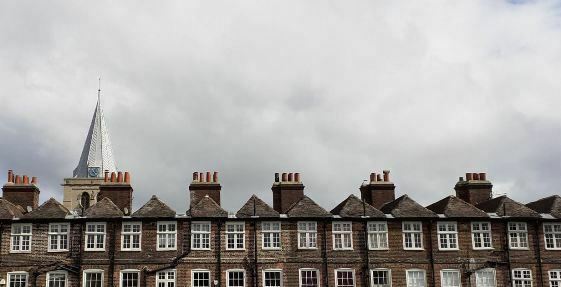
Doubling back, past the quaint Minor Canon Row, Rochester at its most Trollopeian, though the minor canons have long since departed. Other kinds of folk, more comfortably off, are now in residence.
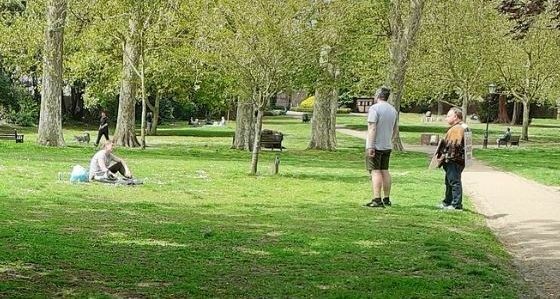
Up and beyond is The Vines, a parkland area with a pleasant avenue of plane trees and more of the natives rediscovering the day. Things look half-normal. A tubby man stands with boards to the front and back of him, bearing the words ‘Jesus loves you’, while his companion tries to persuade one of those sitting on the grass of the urgency of this intelligence.
At the end of The Vines stand Restoration House, so-called because Charles II stayed there one night. An Elizabethan mansion created out of two Medieval houses, it was restored by the entertainer Rod Hull, which decades on still feels too much of an historical absurdity. Charles Dickens re-imagined it as Satis House in Great Expectations. Sadly, the insides are filled with antiques collected by the present owners, and not an abandoned wedding feast.

Go right, and you discover the plainer, humbler stretches of the town, rows upon rows of Victorian and Edwardian workers’ homes that do not feature in the picture postcards. Go left and you head for the high street, having unknowingly circled the hidden centre of the town, which is the extensive grounds of cathedral and King’s School. Rochester radiates out from a jealously guarded core of privilege and tradition.
And so to the high street, pedestrianised, a long, uneven line of shops of assorted degrees of quaintness. Here lies the heart of the Dickensian branding. It tries so hard – and occasionlly succeeds – to look just as one-time resident Charles Dickens left it. Seemingly every other venerable building has a plaque proclaiming that it features in one or other of the novels that you have never quite got round to reading.
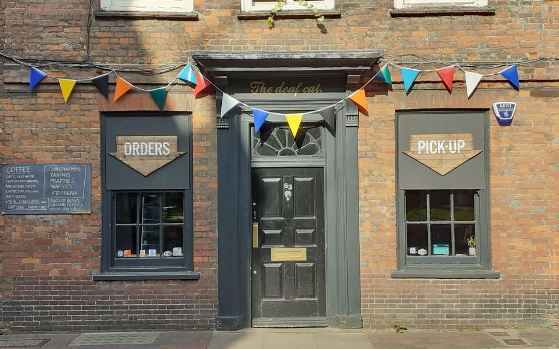
The shops all bear those signs apologising for not being open. But life is creeping back. There are more of the natives than we have seen for a couple of months now, though they have limited options for spending the money they have been unable to spend. A restaurant and the Deaf Cat café (Dickens had a pet cat that was deaf, we’re told) take orders through one window and dispatch the results through another. A lamp shop is open. A health food shop is open. A shop selling cheese has a long queue formed outside. Are we desperate for anything of our former ways, or is it just exceptionally fine cheese?

Then there are the hairdressers. There are nine of them, in one street. What sort of a catchment area must you have to support nine hairdressers? None dare open, for none of us dare be so close. We have discovered how to cut hair at home and yet not look dreadful. Now long will the nine survive as nine?
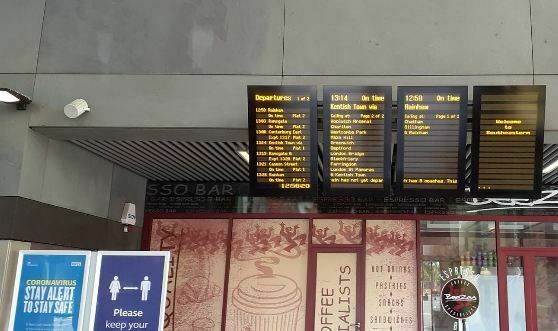
We could continue to the end of the street, to the river and the completion of the circle, but turn right instead, leaving cathedral behind us, and cross the busy road that obligingly skirts the picturesque centre. Here is the new Rochester. The shiny new railway station, glass glittering in the sun, boasts a full timetable even if few take advantage of it in these days. It is the lure that is drawing young Londoners with the promise of a new homes, fast trains, river views, and escape from the great city.
Go under the railway line and here former docklands have been converted into inviting homes that look exactly likes the artists’ impressions of them that were all we had to judge while these lands were left fallow. Now 1,400 homes are planned, stretching along the riverside, staring out over the sites of former river industries as the town transforms before our eyes.

Building is in progress, but the first residents have moved in. They look exactly like the model people in those self-same artists’ impressions. A model town with model people.
Not every patch of land has been built upon as yet. Where more houses and a school are planned, there is still a wilderness. Here, for the time being, only grass, daisies and the occasional abandoned plastic bottle reign. It is one last bastion against the taming.

It does not take a day to do the tour. A hour or two. The rest of the day is spent indoors: reading, writing, viewing, contemplating. There are variations one can make on the circuit, one can travel further afield, but the close circle – partly following the logic of what was once a walled city – gives you the heart of it.
We live in circles, we live in days. What are days for? Days are where we live. They come, they wake us time and time over. They are to be happy in: where can we live but days?
Larkin’s poem ‘Days’ works strangely well as prose. Perhaps it is that we view days prosaically, repeatedly missing the poetry. These times of lockdown have exposed the poetry and the circularity of days. They come round and round again, and each day we must follow the same route, round and round again. What can we live in but days?
Ah, solving that question brings the epidemiologist and the doctor in their long coats, running over the fields. As Larkin almost said.
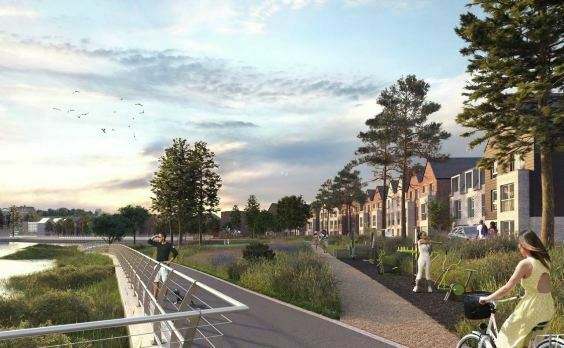
As a newcomer to Rochester, I enjoyed reading your story. Rochester did lure us (not so young and adopted) Londoners with its promise of “new homes, fast trains, river views, and (particularly) escape from the great city.” I can’t wait to continue discovering the great history of this place.
Welcome to Rochester, Felipe. It’s a great place in which to be, and to explore. I have been here over thirty years and I can still find something new to excite me every day.